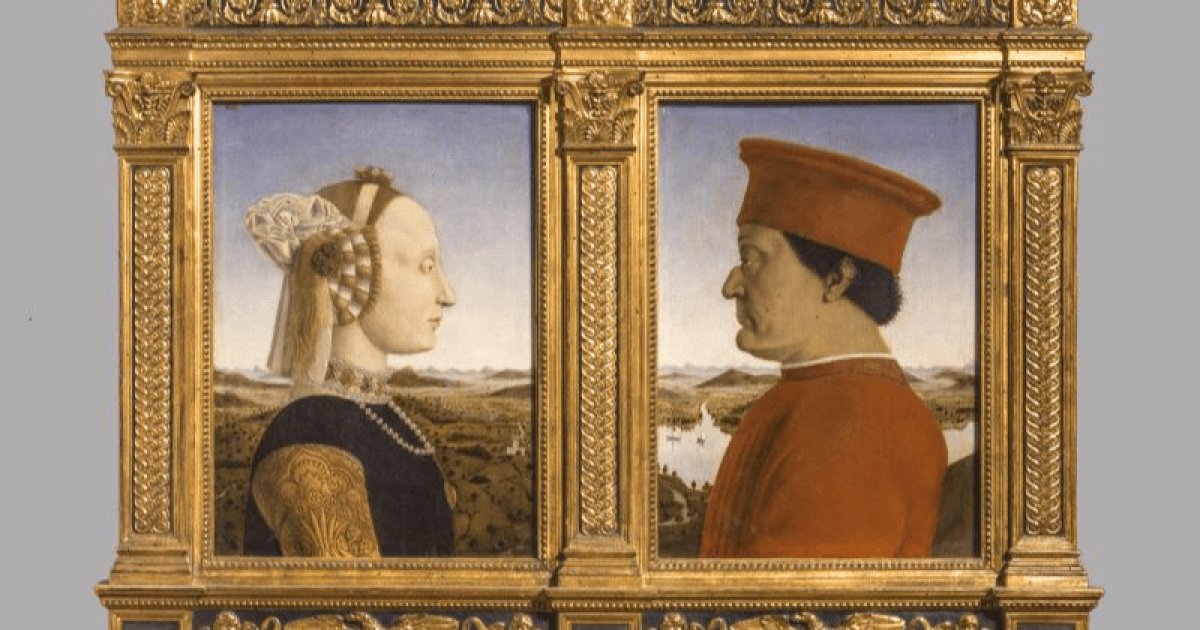UFFIZI, Piero Della Francesca-Duke And Duchess Of Urbino_Room A9
 Language: English / USA
Language: English / USA
The famous portrait of Battista Sforza and her husband Federico da Montefeltro, better known as 'The Duke and Duchess of Urbino', painted by Pietro della Francesca around 1475, is one of the best-known portraits from the Renaissance exhibited in the Uffizi.
Before I tell you about the work, I will briefly tell you about the married couple depicted here.
You should know that the lady, Battista, a descendant of the noble Sforza family, was given in marriage at the age of 14 to her stepmother's brother, the 38-year-old Federico da Montefeltro, who had recently been widowed. Despite their age difference, their marriage was a happy one from which seven children were born: six girls and finally a boy. Sadly, shortly after the birth of her last child, the young Battista, aged only 26, died of pneumonia.
It is not known whether the painting was made before or after her death. What is certain is that it was originally enclosed in a frame that closed like a book, allowing the back of the work to be admired. In fact, if on the front side you see the two figures portrayed in profile, as was the custom for emperors on coins, on the opposite side the couple are depicted, as if carried in triumph, on two chariots heading towards each other.
In both paintings there are many symbolic details.
On the side with the portraits, we see Federico da Montefeltro on one side, represented by his best profile, the left, since he had lost his right eye during a tournament; he wears a red suit and headdress, representing his status as a condottiere. Opposite him, however, Battista wears a dress whose embroidery is reminiscent of the pomegranate flower, a symbol of fertility, and a pearl necklace symbolizing purity.
On the back we see the chariot on the left with the Duke, accompanied by four allegorical figures representing his main qualities: justice, prudence, fortitude and temperance. On the right, on another chariot, is the Duchess escorted by characters symbolizing faith, charity, temperance and purity.
Here’s an interesting fact: There are those who speculate that the painting was made after Battista’s death and that the scene on the back side depicts the reunion of the couple after death, but we can never know for sure.



